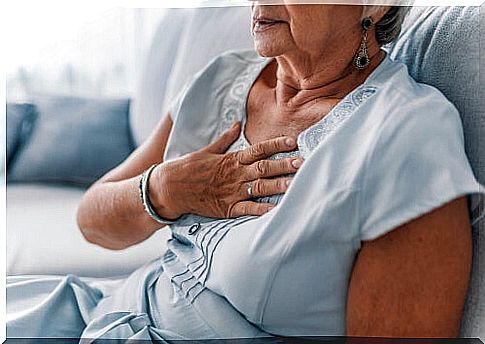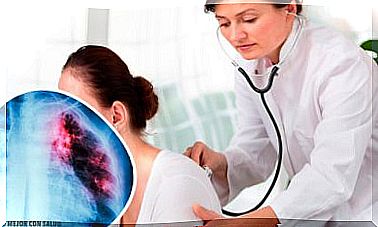Symptoms Of Myocardial Infarction In Women
Not always a myocardial infarction in women is symptomatic. Sometimes it happens quietly, and that raises the risk of long-term damage. By not being able to detect it early, the patient does not consult and the picture evolves.
It is possible to speak differently of a myocardial infarction in women compared to men, because each sex has its peculiarities. So much so, that scientific studies tend to differentiate between those that evaluate one or the other.
Recognizing the early onset of symptoms of this condition is key to survival. In fact, it constitutes a medical emergency that must be resolved soon, since the first two hours can be crucial for the prognosis.
What is myocardial infarction?
We say that there is a myocardial infarction when the heart muscle dies in some section of all the tissue. Cardiomyocytes are the cells that make up the heart, and like the rest, they need oxygen and nutrients to function.
If one of the coronary arteries, responsible for transporting blood to the cardiomyocytes, becomes blocked, then the cells are left without food. The metabolism stops and the death processes begin, more or less extensive.
The obstruction of the coronary arteries is usually referred to the generation of thrombi by coagulation or by the accumulation of plaque from arteriosclerosis. This, in the background, responds to cumulative risk factors in the body.
For both men and women, the conditions that lead to myocardial infarction are similar. In any case, in the female sex it is evident that hormones play a fundamental role.
According to an article in the Scientific Journal of Research and Knowledge , the arrival of menopause increases the chances of a cardiovascular event by lowering the protection provided by estrogens.

Symptoms of myocardial infarction in women
One of the first scientific studies that established the differences in myocardial infarction symptoms between women and men dates back to 2003. It was published in the journal Circulation and included 515 patients from various geographic locations.
Among them, the most predominant sign was chest pain. As it is a cell death, the obstruction of circulation in the heart results in microscopic chemical manifestations that the nerves interpret as pain.
In any case, and based on this research that we cited, it was established that up to 43% of women do not experience chest pain. It means that many heart attacks will not have what is considered a classic sign of the disease.
Other symptoms of myocardial infarction in women that we can mention are the following:
- Extreme fatigue, with more than usual tiredness. It is a symptom that can appear up to a month before going through the acute episode of heart attack.
- Anxiety and trouble sleeping.
- Shortness of breath. Sometimes associated with extreme fatigue, and therefore, with onset up to 30 days prior to the heart attack. Dyspnea circulates less oxygen in the tissues, especially the muscles, making it difficult to walk and move.
- Epigastralgia. This is pain that is mistaken for heartburn in the pit of the stomach. It results in a confusing symptom when the woman suffers from gastritis before, since it supposes that it is an indigestion more to which she is used.
- Pain in the upper limbs, such as radiation of chest pain to the left arm.

Symptoms of myocardial infarction in menopausal women
Menopause means a drop in hormones in women. Estrogens are the most affected, and with them much of the metabolism of the body’s tissues is altered.
Faced with the fall of these circulating substances in the blood, women increase their risk of osteoporosis, diabetes, high blood pressure and, of course, of acute myocardial infarction.
According to a review in the Journal of the Central American Federation of Obstetrics and Gynecology , estrogens regulate vasodilation and contraction of the arteries, so their absence disrupts blood flow systems.
What can happen in women over 50 with a heart attack is that some symptoms are exacerbated. Chest pain is more intense and tends to radiate more rapidly to the upper limbs and neck. The jaw is also an area that can be painful as a reference to the heart.
Arrhythmias are more common in menopause and during acute cardiovascular events, which increases the ultimate risk of death. If fibrillations are not reversed, for example, the body does not receive adequate circulation.
Menopause can also be the subject of a silent heart attack. With age, the innervation of the peripheral nerves and their sensitivity decreases, so it takes time for pain to appear and be perceived.
Heart attack is an emergency
Beyond the symptoms of myocardial infarction, both in women and men, it must be recognized that the pathology is an emergency. An immediate consultation is needed if an ongoing cardiovascular event is suspected.
It is important to have at home the data of the emergency services of the area where we reside. The identification of a heart attack has to mobilize us towards prompt and qualified professional care.









